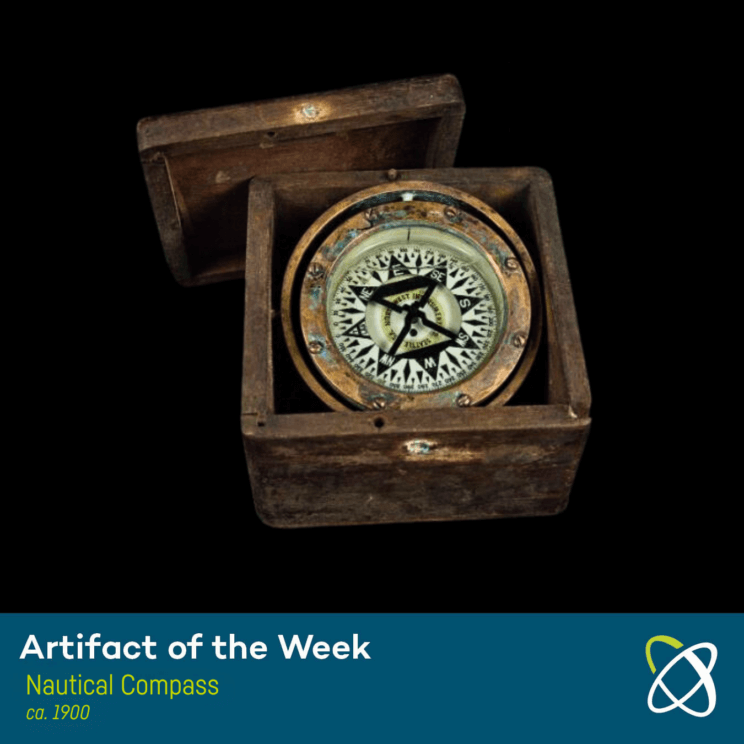Nautical Compass, ca. 1900
Ahoy landlubbers! Take a look at an amazing innovation in maritime navigation! The nautical compass (or mariner’s compass) uses the Cardan suspension system to keep the compass horizontally stable while a ship is sailing. Also called a gimbal system, this was a breakthrough in navigation since it allowed a compass to be used accurately at all times despite the pitching and rolling of a ship during storms or heavy seas.

The Cardan suspension system used in nautical compasses was created by an Italian doctor and astronomer named Gerolamo Cardano in the 16th century. The suspension system has two concentric rings whose axes are at right angles, which allows one ring to maintain orientation of an axis while the other moves. It was a breakthrough in navigation at a time when it was difficult or nearly impossible to maintain course during storms or heavy seas. The gimbal system allowed the compass inside to remain horizontally stable, and therefore accurate, regardless of the motion of the ship.
See more Artifacts of the Week








